Meyer Lemons — The Salty
I owe a debt of gratitude to Moroccan cooking expert Kitty Morse.
After all, she’s the one who taught me just how easy it is to make my own preserved lemons.
How easy?
So easy that you don’t even need a real recipe for it.
I took a cooking class at Draeger’s years ago that Morse taught. It was there that she turned me on to the endless wonders of preserved lemons.
They cost a tidy sum if you buy them already made in jars in fancy gourmet stores. They cost mere pennies if you make them yourself, especially if you have your own lemon tree.
I always use Meyer lemons just because I love the floral, complex, and less puckery taste that they have. But I also know that Mourad Lahlou, the Marrakech-born chef-owner of Aziza in San Francisco, likes both Meyers and Eurekas, but for different uses. At a cooking demonstration late last year at the Culinary Institute of America’s Greystone Campus in St. Helena, Lahlou said he favors the more delicate preserved Meyer lemons in salads, but preserved Eurekas in long-cooked stews because the rind is thicker and doesn’t break down so much.
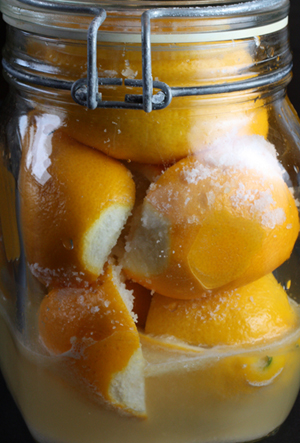
Whatever lemon variety you choose, I guarantee you will have a fascinating time making preserved lemons. If you have kids, they’ll have fun watching the lemons do their thing, too. Think of it as your own little science experiment.
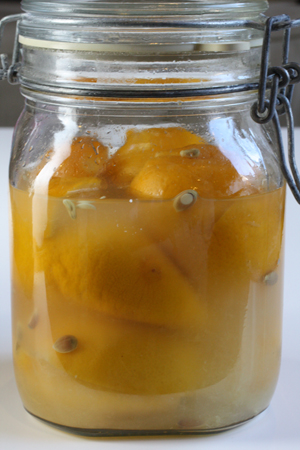
Indeed, the first time I wrote about making preserved lemons years ago in the San Jose Mercury News, I admitted I couldn’t stop looking at my lemons as they transformed themselves. I wasn’t the only one. Many readers wrote back after making their own batch, confessing that if they woke up in the middle of the night, they’d sneak a peek at their lemons. Morse even laughed that my lemons had become my pets.
So how do you make them? Simple. All you need are washed and preferably organic lemons (either Eurekas or Meyers), kosher salt, and a glass jar with a tight lid that has been sterilized by running it through the dishwasher.
Make two cuts in each lemon so that the quarters created remain attached. Stuff kosher salt into the crevices of the lemons. Then, place salted lemons tightly into the glass jar. If I have one or two leftover lemons, I’ll often squeeze the juice into the jar before closing it. But you don’t have to. This just gives the lemons a little bit of a head start.
Place the jar on a counter top, and then just watch and wait. Over the next few days, more and more juice will exude from the lemons, filling the jar. You can give it a shake now and then — or not — to keep the salt blended well in the liquid. In about three weeks, the lemons will get very soft, and the brining liquid thick and cloudy. Once that happens, you can store the jar in the refrigerator. As long as the brine covers the lemons, they’ll keep for about a year refrigerated.
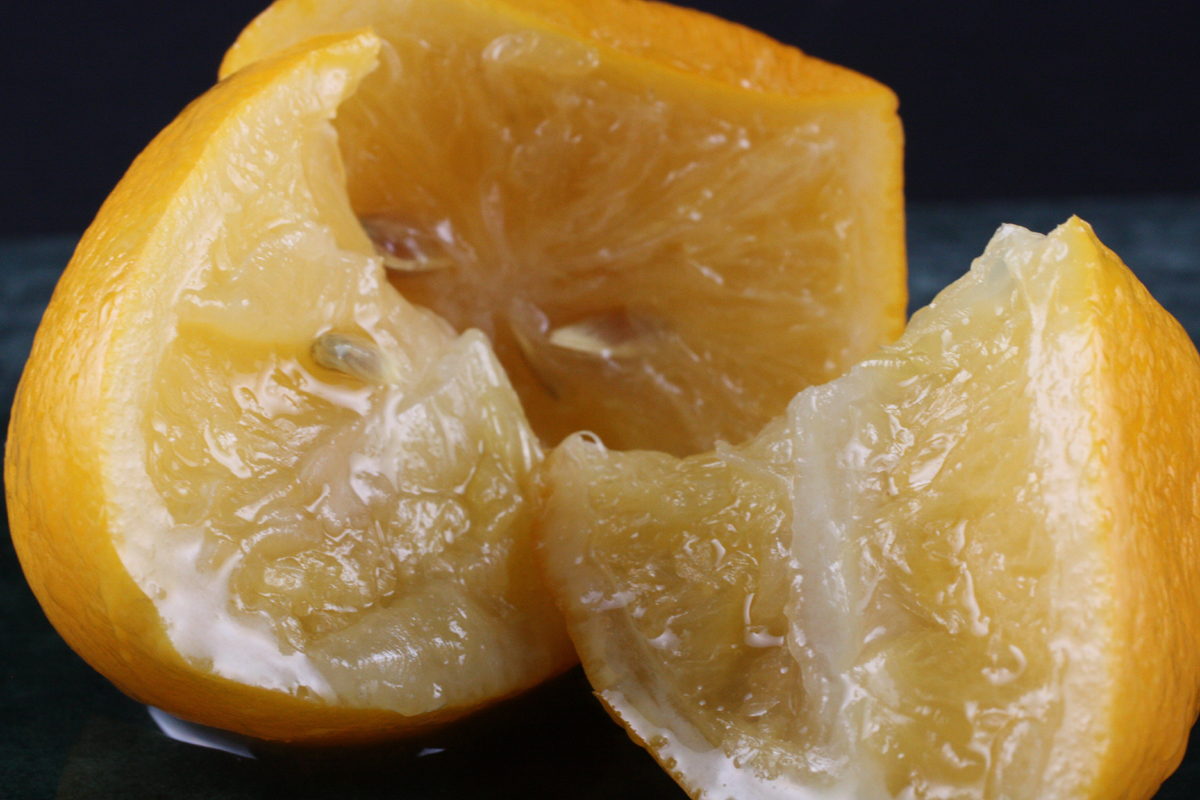
To use, pick a lemon or part of one out of the jar with a clean fork. Give the lemon a quick rinse. Remove any seeds. Then, use the peel however you like — chopped or sliced in thin slivers. Some people discard the flesh, but Morse considers that wasteful. I always add some of the chopped flesh in with the rind in whatever I’m making.
Use preserved lemons in your favorite Moroccan chicken tagine recipes. Or stir it into tuna salad for sandwiches, pasta salad, bean salad, vinaigrettes, marinades for fish or Cornish game hens, or in couscous topped with toasted pine nuts.
With their bright, salty-citrus taste and jammy texture, you’ll find that preserved lemons add complexity and depth to so many dishes.
Of course, there are faster ways to make preserved lemons. Some people boil the lemons in the jar in a water bath, thereby cooking the lemons, and making them ready to use the very next day. Others freeze the lemons first, so they start to break down. But I like to wait for mine. After all, that’s half the fun.
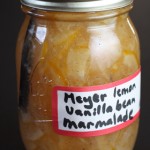
Yesterday: Meyer Lemons — The Sweet; Making Marmalade

More Lemons: Pastry Chef Emily Luchetti’s Perfect Lemon Squares
More: Saveur’s Best Damn Meyer Lemon Cake
And a Recipe That Incorporates Preserved Lemon: Ming Tsai’s Savory Braised Oxtail with Preserved Lemon Polenta

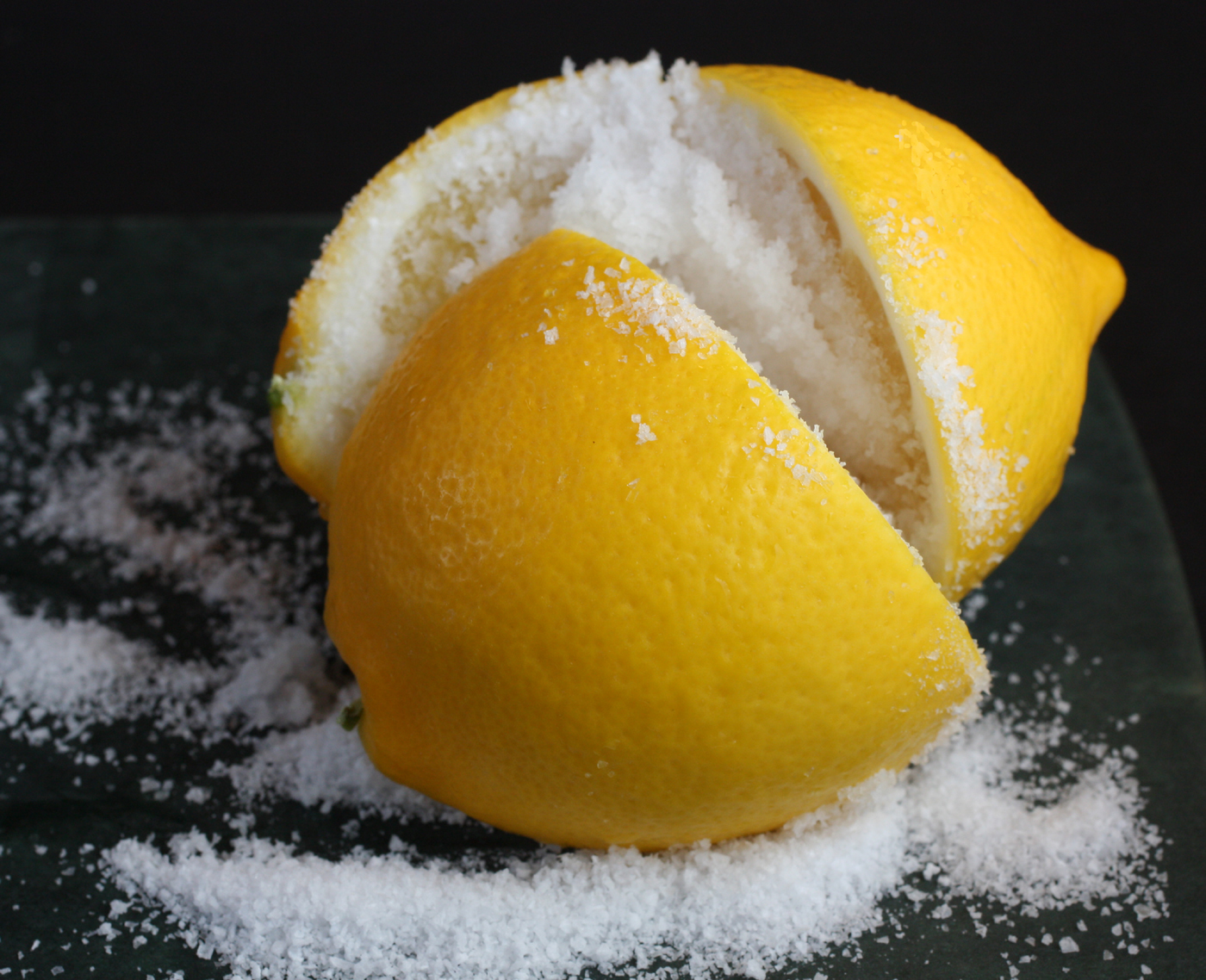


I am so fascinated by this. I am going to give this a try as soon as I get my hands on some more Meyer lemons. My local market was selling them a couple weeks back for $1 a bag! I thought I stocked up, but sadly realized that I had already breezed through the three bags I had purchased!! Thanks for this! 🙂
Pingback: Weekly Recipe Wrap Up – The Preserved Lemon Edition | Delicious Obsessions
Pingback: Food Gal » Blog Archiv » Meaty Memories
Pingback: Food Gal » Blog Archiv » Microwave Potato Chips — Really!
I have 2 Meyers Lemon Trees in my back yard in California, can’t wait to try these preserved
lemons, my husband will be in heaven, he loves lemons.
Juliet
Pingback: Food Gal » Blog Archiv » Melissa Clark’s One Dish Wonder
Wonderful recipe and photo. Amazing!
Pingback: Food Gal » Blog Archiv » A Gift of Sweet, Syrupy Clementines
Wonderful! I am so glad I found this, a Pinterest link! How fun, I can hardly wait to do it. Thank you for sharing 😀
I love this idea! Just wondering, though….is there anything you can do with the lemon juice? It seems that it would be way too salty to really use???
Kay: Do you mean the juice that’s in the jar after the lemons are fully softened and preserved? If so, it turns quite thick and viscous, and there’s not really much of it. So, I don’t think you really need to worry about using it up or wasting it. Hope that helps. 😉
Can you do this with limes, oranges, other citrus? Do you have to keep them in the fridge or can you water bath the jars to keep them on a shelf so that you can do a bunch when they are in season?
BJ: I’ve known people who have used the salt-preserving method on limes and kumquats. I have not heard of it done on oranges, though. Maybe they aren’t acidic enough? And nope, never heard of anyone water-bathing the jars afterward. Hmm, anyone else out there tried doing that?
Pingback: When Life Gives You Lemons- Preserve Them! » Dirt and Martinis
Pingback: Lemons, Lemons, Everywhere | Five Ideas for Lemons | Scottsdale Moms Blog
We use preserved lemons a lot in Moroccan cuisine; I can’t cook most of my tagines without them and they are the star of the show in my lemon chicken…yum!!!
Hey! I was just wondering…… I’ve tried this method twice and both times my lemons started molding! I bought new jars (glass) the 2nd time because I thought maybe the plastic might expand and not have a good seal! But they molded the second time also!! I’m so disappointed! Any suggestions?
How cool!! 🙂
Can you use “Redmonds-Real Salt” instead?
Christine: I wasn’t familiar with Redmond’s, so I did a Web search. It appears to be sea salt, so yes, that should work for preserving lemons. However, depending upon how many lemons you plan on preserving, you do need a fair amount of salt. And Kosher salt is generally less expensive than sea salt. Just something to keep in mind if cost is a factor.
I don’t really care for lemons or lemon flavor. I think I’ll try it with limes instead.
it is awesome and delicious recipe
We buy preserved lemons at the market when we make tagine but still haven’t gotten around to making them. Thanks for posting this! Inspiration!
This is such a good point! If people use salt to preserve other foods, then why not lemons? Great point! I think I might have to try this!
~nerdwithtaste.wordpress.com
Pingback: Hello World!
Good afternoon!
I just discovered your blog from Pinterest and LOVE it! I can’t wait to read more.
However, just a comment that the “cancer” ads and other rolling ads that you have on your blog that appear on top of your blog name are very distracting. It detracts from your upbeat and beautiful blog since that is the first thing you see when you come to your blog.I know you earn money from these but a cancer ad just seems out of balance with the beauty of your blog.
Have a wonderful weekend,
Nancy
Pingback: Preserved Lemons « Written For Our Learning Written For Our Learning
Just went back and reread all the instructions, just as I was about to write you, ‘help, the jar has filled up with juice and it’s only been six days!’
I cant wait till my lemons look yours do.
Thanks for the recipe.
I’m moroccan ,this is really good , we use it in many dishes , try it ^^
looks so good. I’m going to learn some recipes so i can use these. thanks.
Pingback: Lemons, Lemons, Everywhere | Five Unique Ideas for All That Citrus - Scottsdale Moms Blog
I did this a year or so ago and mine started to get mold on top, too. Perhaps I waited too long. I just tossed the moldy ones and bagged the rest and put them in the freezer. I used them for chicken tagine and other stuff and am now planing to try again but waiting for the price of the lemons to go down. Really pricey here.
Karen: When you leave them on the counter-top at the start, make sure it’s in a cool area. Also, you do need to use a resealable jar, so you can shake it every day or use a spoon to push the lemons down into the jar further so that they get contact with the thickening brine. I hope you try making them again. I put up a jar every winter. After the lemons start to soften, I stick them in my fridge, and they keep for even longer than a year without any mold issues.
Could I use whole lemons without cutting them?
I’ve seen some recipes for preserved lemons where you let the lemons soak in new water daily for a few days before stuffing with salt. Is there a rationale for doing that (I.e. Remove any debris, sped breakdown, or something else?), or should I just proceed as you have?
Never made this before, but am excited to give it a whirl! Thanks
Laura in Texas: I have not seen the method for soaking the lemons. But I have heard of other techniques such as freezing the lemons or cooking them slightly on the stovetop — both to speed the process along. I just do it the old-school way as outlined in the post above. It’s easy, and it’s kind of fun to have to wait a little for the lemons to be ready. You get to see them transform then. It’s built-in entertainment. 😉
Help! It’s been about five days, and my jar which was stuffed to the gills has shrunk down but the juice is only about half the jar. Should I add more lemons to re-pack it tight?
Michelle: You can pack into the jar some more lemons, and squirt some fresh lemon juice in, too. That should get the liquid level higher.
Redmond’s salt is from red rock mines in Utah. It’s an amazing salt with so much mineral flavor and you can see the multicolored minerals. Utah was once under sea so their salt deposits have taken much from the years under red rock.
Years ago I read an article about freezing the salt laced lemons–which actually speeds up the process. It was to prepare the lemons as usual. Place in a jar that has room to expand in the freezer for 1-2 days. Remove and sit on the counter only for a day or two and you will have perfect preserved lemons. I did this with Eureka lemons and it was speedy as when you freeze then defrost any fruit the cellular structure breaks down upon defrosting. So instead of waiting weeks for the salt to do all the work it happens faster. I have not tried it yet with Meyers but I’m guessing it’s the same although the skin will be softer. Someone mentioned Eureka for stews…just add the Meyers at the end of cooking and stir in.
Annette: I have heard about that freezing technique. I haven’t tried it myself, but have no doubt that it works. I think I just like watching the slow transformation of the lemons as they sit on my countertop. I’m old-school that way. LOL